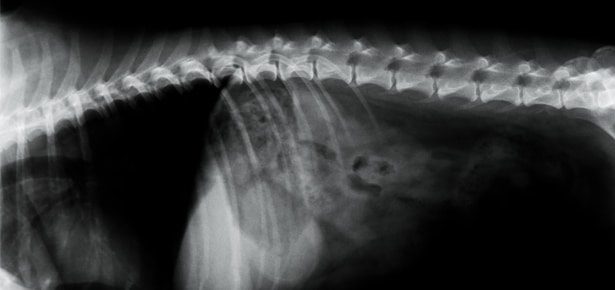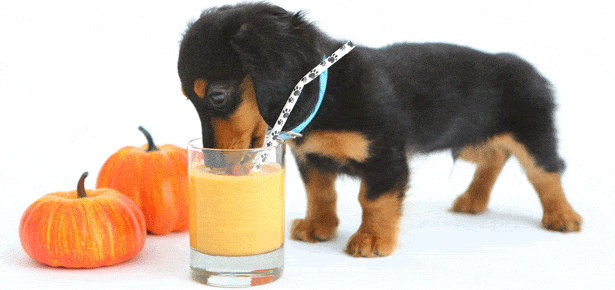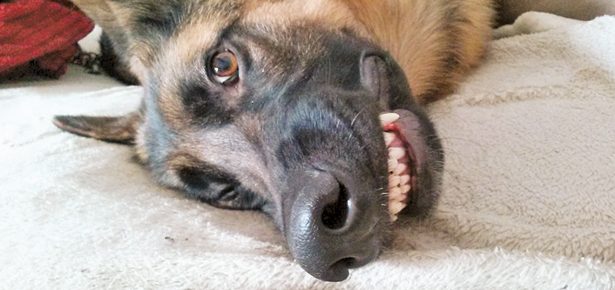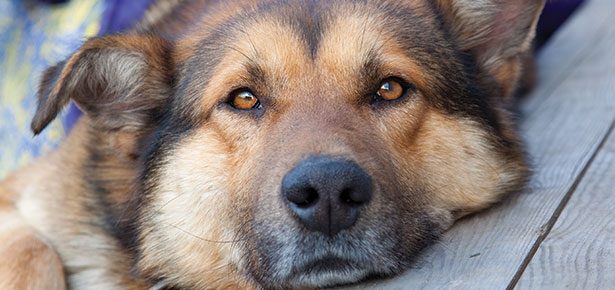

Pet Talk: Intervertebral Disc Disease In Dogs
How to recognize the signs of spinal trouble in your pet
Shock absorption between our bones is essential to perform normal physical activities. Just like humans, dogs can injure their bones and their joints, making every day mobility a challenge. In intervertebral disc disease (IVDD) the intervertebral discs, or cushions in between the bones of the spine, can degenerate from an injury or as dogs age.
Intervertebral discs are cartilage tissue between the spinal bones, or vertebrae, that act as shock absorbers during movement. Deterioration of the discs make them brittle and weak, so that the normal forces applied during movement cannot be effectively cushioned. This often leads to deformed or ruptured discs, which can press on the spinal cord above them, resulting in signs that range from neck or back pain to complete paralysis of the limbs.
Canine IVDD occurs in two main categories: Type I and Type II. In Type I of the disease, the inner portion of the disc is calcified, or hardened. This occurs quickly and leaves the disc brittle and more prone to rupture. Type II develops slowly, and the discs become hardened and more fibrous over time, eventually bulging out and applying pressure to the spinal cord.
Though both types of IVDD are caused by degeneration of discs, dogs may be more at risk for one type of IVDD than the other. Dr. Beth Boudreau, clinical assistant professor at the Texas A&M College of Veterinary Medicine & Biomedical Sciences, explained what breed of dogs are more at risk for the disease. “For Type I disc disease, breed plays a big role,” she said.
“Chondrodystrophic dogs, which are canines that have genetic differences that cause skeletal disorders, are more at risk for IVDD than other breeds because their discs may undergo very early degeneration. There are many chondrodystrophic breeds, including the Dachshund, the French Bulldog, Corgi, Beagle, Basset Hound and Miniature Poodle. For Type II disc disease, any breed of dog may be affected. Because of the slower nature of development for Type II of disc disease, dogs with this problem tend to be older than those with Type I disc disease.”
If your dog shows an unwillingness to jump, has pain or weakness in the rear legs, cries out in pain, or displays a reduced appetite and activity level, you should consider taking them to the veterinarian for an examination. Diagnosis for IVDD starts with a complete neurologic exam by your veterinarian and possible X-rays, but is confirmed with an MRI or other advanced imaging.
If diagnosed with IVDD, your dog will not have to endure pain for the rest of its life. There are two main types of treatment available for IVDD: medical management and surgery.
“Medical management involves managing pain associated with disc disease in addition to a period of strict rest, to give the stretched or ruptured disc time to heal itself,” Boudreau said. “This is most appropriate for less affected patients, especially those that are having signs for the first time. Alternatively, surgery can be performed to remove abnormal disc material that is encroaching on the spinal cord. This treatment option is recommended for patients who are more severely affected, or for dogs that do not improve with medical management.”
Though IVDD is manageable in dogs, prevention is the best way to keep your pet pain-free even in breeds that are at a higher risk for disc degeneration. Feeding Fido a balanced diet and helping him maintain a healthy weight can reduce stress on the neck and backbone. If your dog tends to pull on the leash while on a walk, invest in a harness to ease even more stress off the neck. Keeping steps next to the bed or couch may also prevent your dog from jumping and developing an injury. These simple steps are a great way to keep your pet safe and healthy.
Join the newsletter and never miss out on dog content again!
"*" indicates required fields
By clicking the arrow, you agree to our web Terms of Use and Privacy & Cookie Policy. Easy unsubscribe links are provided in every email.





